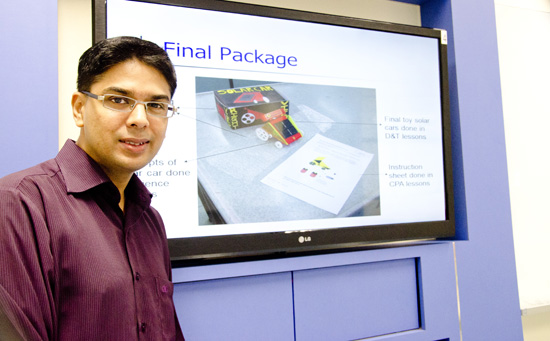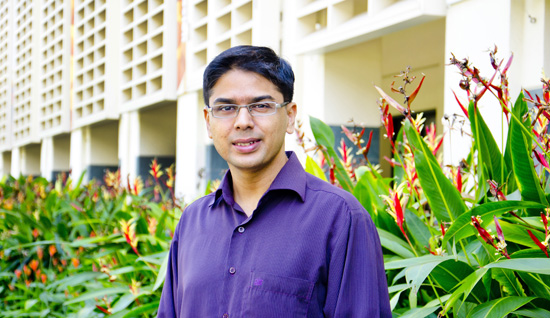Why Singapore’s English Teachers Should Embrace Singlish, Not Fight It
Is it time for Singaporean educators to embrace Singlish as a legitimate learning tool? What the Research […]
Read More
At Greenview Secondary School, lower secondary Normal (Technical) students get to design and create toys as part of a Science-based project. Through this approach, students develop a more positive and confident attitude towards Science learning.
“Teaching Science to Normal (Technical) (NT) students is not an impossible task,” says Mr Nazir Amir, a Science and Design and Technology (D&T) Senior Teacher at Greenview Secondary School.
He believes that it starts with teachers getting to know their students, understanding their needs and customizing their teaching approach to generate interest in learning.
Given that NT students are predominantly kinaesthetic learners, teaching abstract concepts straight from the textbook isn’t the best way to make them understand or learn Science.
Nazir decided to make use of hands-on design activities to engage these students and help them relate what they learn in school to their daily lives. He teaches Science to his lower secondary NT students through Science-based toy projects.
 One of the projects that these students are involved in is called the GVSS Junior Solar Sprint. For this project, students are asked to design and create a solar-powered toy car. To do so, they carried out hands-on investigations in the areas of mechanics, electronics and structural testing during Science lessons.
One of the projects that these students are involved in is called the GVSS Junior Solar Sprint. For this project, students are asked to design and create a solar-powered toy car. To do so, they carried out hands-on investigations in the areas of mechanics, electronics and structural testing during Science lessons.
“I need to convince them how knowledge gained in their Science lessons can be of use to them in their daily lives. The toy projects offer an avenue for me to do this.”
Nazir collaborates with the English, Art, and Computer Applications (CPA) teachers in a number of such projects so that his students see the relevance of gaining knowledge and skills in these subjects in the process of creating their toys.
Explaining the approach, Nazir says, “Immersing these students in such projects requires a merger of content knowledge and skills across these subjects, to pursue a design task that depicts a real-world setting.”
Indeed, in the real world, tasks and problems are never subject-specific. Students need to know how to synthesize all that they have learned and make connections to come up with meaningful solutions.
“Through the Solar Sprint project, students are able to see for themselves how their knowledge of voltage affects the performance of their toy solar cars,” explains Nazir.
“At the same time they acquire knowledge on recycling and global energy-saving in English lessons, pick up skills in sketching, working with tools and machinery in D&T lessons, use materials to create their toys in Art lessons and prepare instruction sheets in CPA lessons,” says Nazir.
While the purpose of these Science-based toy projects is really about building up positive attitudes in these lower secondary students towards Science, this also becomes a good starting point for teachers to guide students to perform well academically.
 “To motivate and build the confidence of my students in answering questions in the Science exams, I will first test them on questions that are directly related to their Science-based toy projects,” explains Nazir.
“To motivate and build the confidence of my students in answering questions in the Science exams, I will first test them on questions that are directly related to their Science-based toy projects,” explains Nazir.
“Students can see a direct relationship between what is presented in the exam questions and their experience in working on the projects.”
In this way, students can link what they have learned through hands-on experience back to their academic study of Science. This approach will motivate students to learn more deeply.
And he believes these students need motivation more than anything else.
Once they are interested, Nazir believes they will be able to better meet the higher demands in the upper secondary levels, where they will learn more advanced scientific concepts.
A student made this comment at the end of the Solar Sprint project: “I used to hate Science in primary school, but now I love it!”
At the end of the day, that’s the best learning outcome a teacher could ask for.